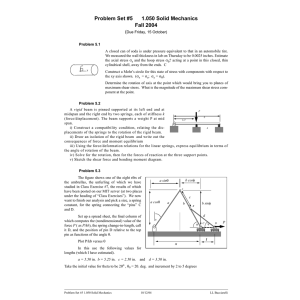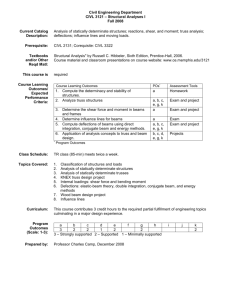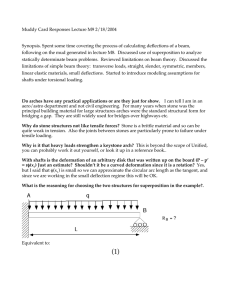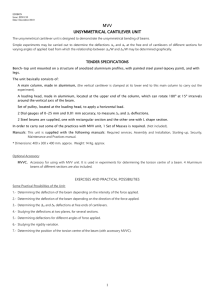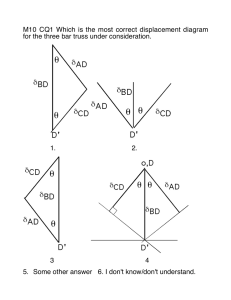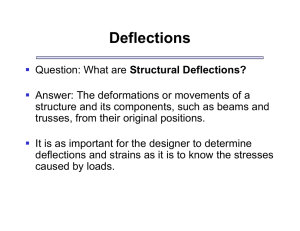Problem Set #6 1.050 Solid Mechanics Fall 2004 (
advertisement
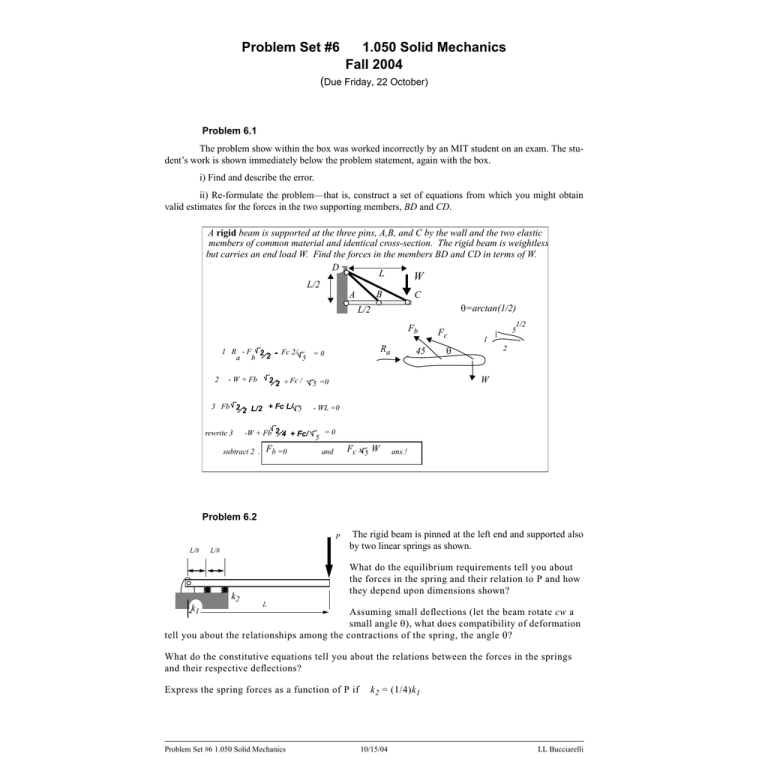
Problem Set #6 1.050 Solid Mechanics Fall 2004 (Due Friday, 22 October) Problem 6.1 The problem show within the box was worked incorrectly by an MIT student on an exam. The student’s work is shown immediately below the problem statement, again with the box. i) Find and describe the error. ii) Re-formulate the problem—that is, construct a set of equations from which you might obtain valid estimates for the forces in the two supporting members, BD and CD. A rigid beam is supported at the three pins, A,B, and C by the wall and the two elastic members of common material and identical cross-section. The rigid beam is weightless but carries an end load W. Find the forces in the members BD and CD in terms of W. D L W L/2 B A C θ=arctan(1/2) L/2 Fb 1 R -F 2 a b 2 2 - W + Fb - Fc 2/ 2 2 + Fc / 3 Fb 2 L/2 + Fc L/ 5 2 rewrite 3 5 Ra =0 45 1/2 Fc 5 1 θ 2 W 5 =0 - WL =0 =0 -W + Fb 2 4 + Fc/ 5 subtract 2 . Fb =0 Fc = 5 W and ans.! Problem 6.2 P L/8 L/8 k2 k1 The rigid beam is pinned at the left end and supported also by two linear springs as shown. What do the equilibrium requirements tell you about the forces in the spring and their relation to P and how they depend upon dimensions shown? L Assuming small deflections (let the beam rotate cw a small angle θ), what does compatibility of deformation tell you about the relationships among the contractions of the spring, the angle θ? What do the constitutive equations tell you about the relations between the forces in the springs and their respective deflections? Express the spring forces as a function of P if Problem Set #6 1.050 Solid Mechanics k 2 = (1/4)k 1 10/15/04 LL Bucciarelli Problem 6.3 All members of the truss structure shown at the left are of the same material (Elastic modulus E), and have the same cross sectional area. Fill in the elements of the stiffness matrix. Y1 v1 u1 X1 AE -------- H H 60 60 45 ? ? u1 ? ? X1 = v1 45 Y1 Problem 6.4 The truss show below is loaded at midspan with a weight P= 60 lbs. The member lengths and cross sectional areas are given in the figure. The members are all made of steel. Atop Atop 3 1 2 -2P 5 Adiag 4 Abot P 2 --2 -P 7 P – 2 --2 3P/2 6 = 0.01227 in2 Adiag = 1.09 Atop Abot = 2.35 Atop 9 P 2 --2 P 2 – 2 --- 8 H = 4.0” P/2 L=2H E = 29.0 E+06 psi P = 60 lbs a) Verify that the forces in the members are as indicated. b) Using Trussworks, determine the vertical deflections at nodes 2 and 4. 10/15/04 LL Bucciarelli

